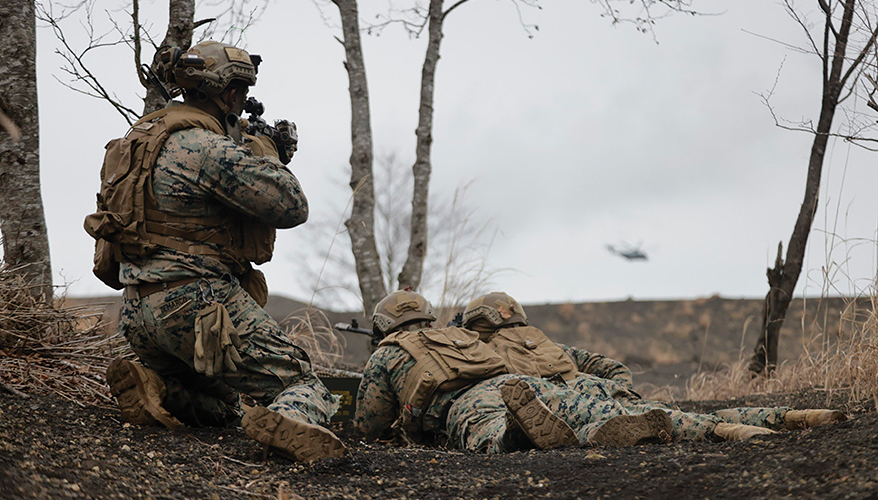MARINE CORPS NEWS
Marines Going Virtual to Address Lack of Training Grounds in Indo-Pacific
By Allyson Park and Scott R. Gourley
 Marines during Stand-In Force Exercise 24
Marines during Stand-In Force Exercise 24
Marine Corps photo
ORLANDO — The Indo-Pacific may be vast, but the areas where Marines can train in the region are not.
There is only so much space on islands such as Okinawa, Guam and Hawaii — and host countries have restrictions on who can train and where, Col. Marcus Reynolds, Marine Corps Systems Command’s program manager for training systems, said.
For example, “you can’t do indirect fire in Okinawa,” he noted in an interview, which first appeared in the Interservice/Industry Training, Simulation and Education Conference show daily. That is reserved for the Combined Arms Training Center at Camp Fuji on mainland Japan on leased lands. But the Marines must coordinate with local farmers so they can periodically access their fields.
Unexploded ordnance is a problem. “As we’re out there, and we’re training, we always have to count the impacts and make sure [the bombs] go off. If they don’t, then we have to send out [explosive ordnance disposal teams] to clear those ranges.”
To alleviate restrictions, Camp Fuji will be expanding its live, virtual and constructive training capabilities, which blend real-world training with simulators and computer-generated forces, he said.
Col. Craig Clarkson, commanding officer of the Marine Corps Tactical Systems Support Activity, during a panel discussion at the conference said: “We’re going to have to be able to see the entire battlespace in all the domains, including the information domain, the cyber domain, and understand the effects that are being had downrange in order to be effective in the future fight against the peer adversary.”
The Marines must use such training to educate warfighters on new capabilities and weapons systems more effectively, he added.
Project Tripoli is an initiative dedicated to providing Marines with its live, virtual and constructive training environment. It aims to “eliminate gaps between experimentation efforts, the training continuum and real-world mission rehearsals and operations,” Thomas Johnson, senior principal engineer at Marine Corps Tactical Systems Support Activity, said during the panel discussion.
One of the gaps the Marine Corps faces today is the lack of a “real construct for simulated people, virtual constructive environments and real systems,” Johnson said.
Reynolds said along with bringing the latest technology to Camp Fuji, the Marines are building a new Military Operations in Urban Terrain facility in Guam using abandoned buildings in a former Air Force housing complex. That will be rigged with cameras and other tech so trainers can review exercises afterward to provide feedback, he said.
Since it will be on U.S. soil, the Marines can bring in joint partners and allies without any restrictions, he noted.
Over the next five years, the Marines have plans to build other high-tech training facilities on the island such as a battle staff training facility, training simulation center and physical training complex, he said.
“We’re very limited on what you can do for things like live fire training. So, we’re starting to leverage our live, virtual, constructive training environment to supplement that,” he said.
The service is also looking at ways to support Marines on rotation in Darwin, Australia, whose training is often hampered by the long rainy season, he added.
Johnson said the Marine Corps still places great value on live Indo-Pacific-centric exercises but blending them with virtual and constructive training is the most efficient way to teach warfighters.
One recent live exercise was the Marine Air-Ground Task Force Stand-In Force Exercise 24 in November and December 2023 in Shizuoka, Japan, Johnson said. Marines demonstrated their tactical proficiency and readiness in the Indo-Pacific theater, conducting stand-in force operations and force-on-force exercises at Camp Fuji, he said.
Reynolds said: “Having to leverage our live, virtual, constructive training environment to get that type of reps and sets for the Marines is going to be paramount in the future,” especially to meet training needs in the Indo-Pacific. ND
Topics: International, Training and Simulation
